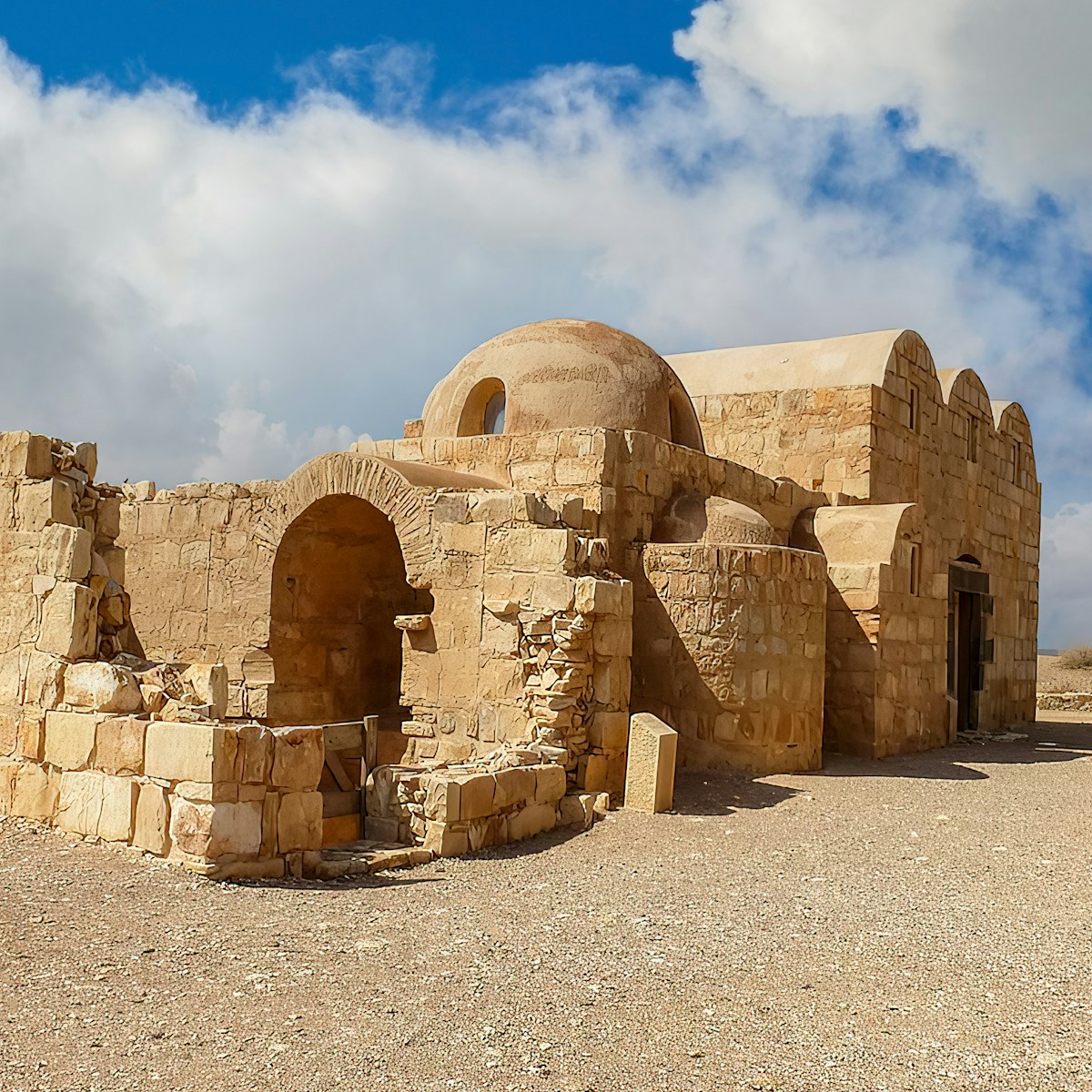Located in the middle of a vast, treeless plain, this imposing thick-walled structure was the most likely inspiration for the ‘desert castle’ moniker and is arguably the most photogenic of all the desert castles. There is controversy about its function and purpose, but this important Umayyad structure remains an interesting sight for visitors, off the main Azraq–Amman road.
Although it clearly isn’t a castle, Kharana was a vital building for the Umayyads as evidenced by its dramatic size and shape. Despite the fact that it has the appearance of a khan (caravanserai), Kharana wasn’t located on any major trade route, and there appears to be a total absence of structures for water storage. That just leaves the supposition that the building served as a meeting space for Damascus elite and local Bedouin.
Named after the harra (surrounding gravel plains), Kharana lords imposingly over a harsh and barren moonscape that appears inhospitable for human habitation. Inside, however, the internal courtyard provides a calm, protected space that even the wind fails to penetrate.
Despite its castle-like appearance, there is no evidence that the intimidating two-storey building, with what appear to be round, defensive towers and narrow arrow slits, was ever intended as a fort. In fact, the towers are completely solid, which means that they couldn’t be manned by armed soldiers and it would be impossible to fire bows from the bizarrely shaped ‘arrow slits', meaning that they most likely served as air and light ducts.
About 60 rooms surround the courtyard inside the castle, and probably served as meeting spaces for visiting delegations. The long rooms either side of the arched entrance were used as stables, and in the centre of the courtyard was a basin for collecting rainwater. Remarkably, the interior is much smaller than you’d imagine as the walls are deceptively thick.
Climb the broad stairways and you’ll find rooms on the upper storeys with vaulted ceilings. Some carved plaster medallions, set around the top of the walls, are said to indicate Mesopotamian influence.
Also in one of the rooms on the second floor are a few lines of Arabic graffiti, which were crucial in helping to establish the age of the fortress. Above the door in simple black script is an inscription that says ‘Abd Al Malik the son of Ubayd wrote it on Monday three days from Muharram of the year 92’. Stairs in the southeast and southwest corners lead to the 2nd floor and the roof (closed to visitors).
Very little is known about the origins of Qasr Kharana, although a painted inscription above one of the doors on the upper floor mentions the date AD 710, making it one of the earliest forts of the Islamic era. The presence of stones with Greek inscriptions in the main entrance also suggests it was built on the site of a Roman or Byzantine building, possibly as a private residence.
Entrance to Kharana is through the visitor centre, which has some displays on local history. Public toilets are available. The hospitable owner of the adjacent Bedouin tent, which doubles as the site coffeehouse and souvenir stall, will brew you fresh mint tea and take time to discuss the issues of the day. Your patronage will be much appreciated if the current absence of tourism continues.
Kharana is 16km further west along Hwy 40 from Qusayr Amra. There’s no viable public transport along the highway (although it could be included in a round trip by taxi from Azraq, from JD20) and the castle is only signposted coming from Amman. It’s easier to spot than neighbouring Amra, especially as it’s disappointingly close to a power station.





